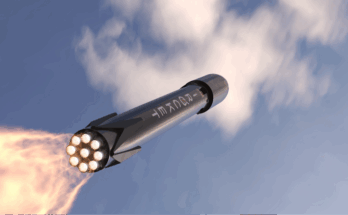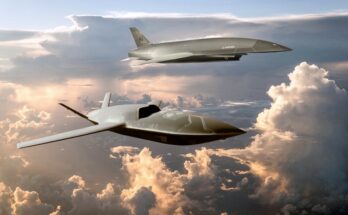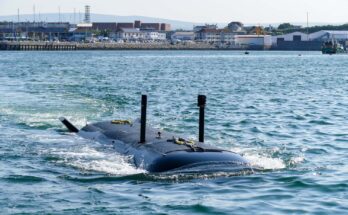
The Global Combat Air Program (GCAP) is a multinational collaborative project aimed at producing a sixth-generation fighter aircraft by the United Kingdom, Italy, and Japan. GCAP is the merging result of the respective three nations to replace their previous generation fighters. BAE’s Team Tempest, the U.K.-led and Italian-supported program to replace the Eurofighter Typhoon, and Japan’s Mitsubishi F-X initiative to replace its Mitsubishi F-2 fighter officially consolidated under the GCAP umbrella in December 2022.
A major goal of the program, in addition to fortifying each member’s national defense, is to strengthen regional security in Europe for NATO and the Indo-Pacific by offsetting Chinese threats and producing an exportable platform to European and Pacific defense markets. The GCAP fighter will incorporate advanced technologies in stealth, weapons delivery, and unmanned control and asset management.
Origins and Timeline
Britain first debuted a model of its next-generation fighter Tempest in July 2018 at the Farnborough Airshow. The announcement included an operational target date of 2035, to replace the Typhoon fighter by the end of its service life in 2040, with manufacturing duties shared between BAE, Rolls-Royce, and Italian defense company Leonardo.
In July 2019, the U.K. and Sweden signed a Memorandum of Understanding (MoU) for Tempest collaboration, with Italy onboarding shortly after. A trilateral follow-up agreement occurred in December 2020, but by March 2023 reports indicate Sweden is unlikely to remain in the program.
The Japanese Ministry of Defense’s efforts to replace the Mitsubishi F-2 with a domestically produced next-generation jet followed a similar timeline to the Tempest project. Japan’s Mitsubishi F-X fighter program initially submitted development bids to both the U.K. and the U.S. defense industries, but reports indicate American reluctance to share advanced technologies contributed to an agreement with the U.K.
Japan’s decision to join GCAP in late 2022 extended the program beyond European borders. The agreement could reinforce international cooperation, balance cost-sharing, and revitalize and expand each country’s economy and localized defense industrial bases.
The program’s development timeline represents a more rapid approach compared to other fighter projects. Currently in the conceptual and technology research phase, officials plan for aircraft development in 2025, with the goal of a demonstrator flight by 2027.
Budget and Partners
The partner nations have yet to settle on each country’s funding for the project. Cost-sharing determinations and workload assignments are expected to be completed around 2024.
The U.K.’s Ministry of Defense (MOD) published an initial investment of EUR2 billion in 2021 to fund GCAP development through May 2025. Since then, EUR1.4 billion of that has already been spent, including a recent contract to BAE Systems for EUR656 million. U.K. spending is part of a EUR10 billion MOD budget to be allocated over the next decade.
Italy’s Defense Ministry first earmarked GCAP funding in 2021 and has since planned to contribute EUR6 billion for the venture. In addition to the Italian government’s GCAP contracting with national defense producers, Italy plans to collaborate alongside technology research companies and universities on its GCAP development.
While the extent of Japan’s GCAP investment is unclear, reports notionally indicate a somewhat even cost-sharing distribution among the three nations, though critics argue Italy may not fully meet the level of U.K. and Japanese funding. Recent reporting predicts the U.K. and Japan will each cover approximately 40 percent of the overall cost, with Italy making up the remainder, though the U.K. and Italy have waved off these comments.
Suppliers
The trinational effort at present includes airframe design by British BAE Systems and Japan’s Mitsubishi Heavy Industries and development from Italy’s Leonardo. Rolls-Royce, IHI Corporation, and Avio Aero handle propulsion, with Mitsubishi Electric, among others, contributing to components and electronics. Additionally, European MDBA will support the weapons development segment.
Export Market and Outlook
A key benefit of GCAP will be sharing the high cost of developing a new fighter across several partner nations. This will also enhance the fighter’s export marketability. As such, Japan will likely continue to loosen its strictly legislated arms export policy to accommodate selling the aircraft to Asian buyers. The U.K. and Italy plan to introduce the jet to the European market. Considering the scale of investment and global scope of the project, the GCAP aircraft could prove successful as a sixth-generation solution for European and Asian nations searching for a fighter replacement when the aircraft moves to production.
Projected production numbers have yet to be determined, and no procurement estimates are yet on record. The GCAP fighter will likely compete with the Future Combat Air System (FCAS) – France, Germany, and Spain’s collaborative sixth-generation fighter program – in the fighter aircraft marketplace. Exports, acquisitions, and unit cost estimates for the project are conjectural at this time but will become clearer as the three countries solidify their respective financial and logistical roles over the next year.
Related Briefers
BRIEFER: Global Combat Aircraft Program (GCAP)
BRIEFER: Next Generation Air Dominance (NGAD) – U.S. Air Force
BRIEFER: Future Combat Air System (FCAS)
Forecast International’s Military Aircraft Forecast reports on fixed-wing military aircraft of all types – fighters, military transports, military trainers, and special mission aircraft – worldwide. Full coverage of leading programs such as the Lockheed Martin F-35 Joint Strike Fighter (JSF), the Dassault Rafale, the Saab Gripen, the Airbus A400M, the Beechcraft T-6, the Embraer Super Tucano, the Pilatus PC-21, and the Boeing KC-46A, among others. For more information, click here.
A former naval officer and helicopter pilot, Jon covers a range of Forecast International reports and products, drawing on his 10-year background in military aviation, operations, and education. His previous military assignments include multiple overseas deployments supporting operations in the Arabian Gulf, NATO exercises, and humanitarian missions. Jon’s work is also influenced by his time as a former Presidential Management Fellow and international trade specialist at the Department of Commerce.
Before joining Forecast International, Jon also served as an NROTC instructor and Adjunct Assistant Professor at the University of Texas, where he taught undergraduate courses on naval history, navigation, defense organization, and naval operations and warfare. A lifelong reader and learner, his academic and professional interests include aviation, political and military history, national defense and security, and foreign area studies.




